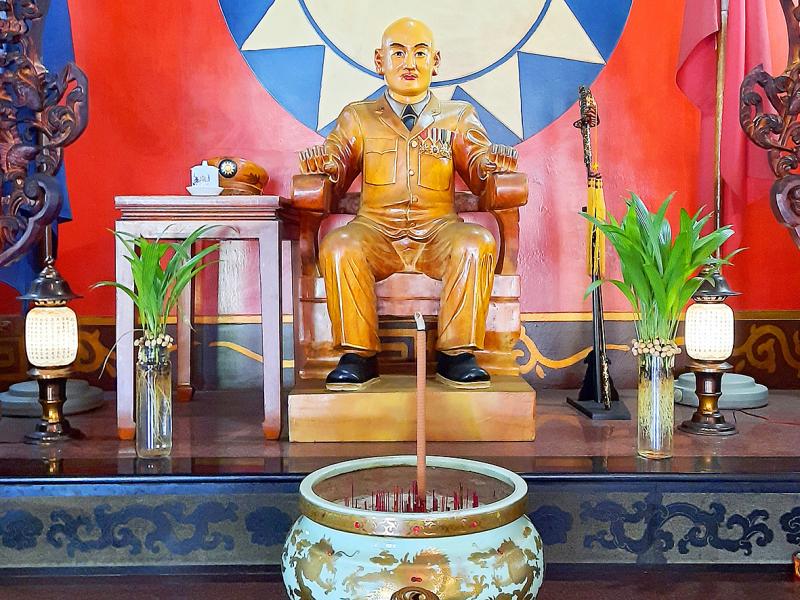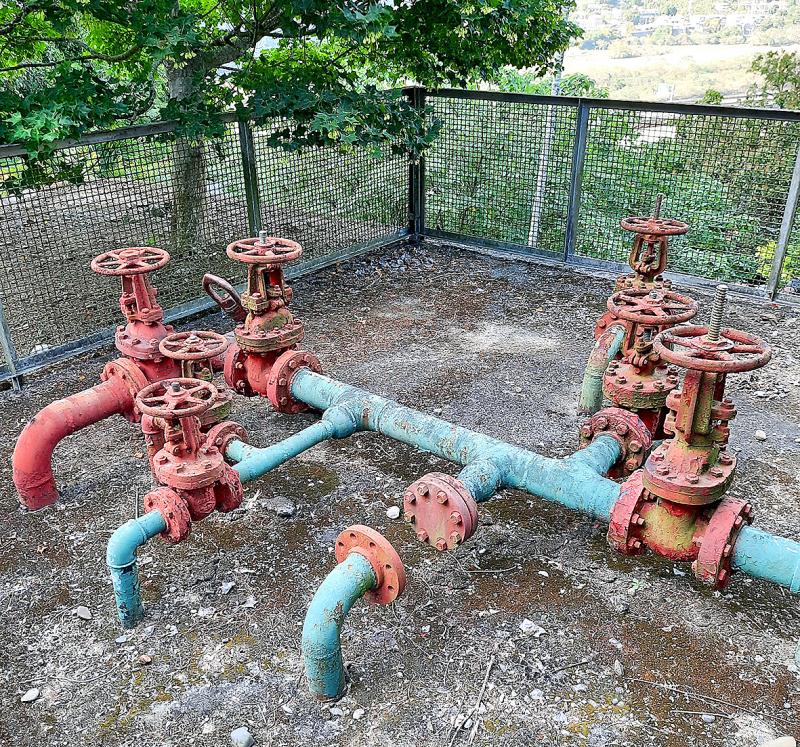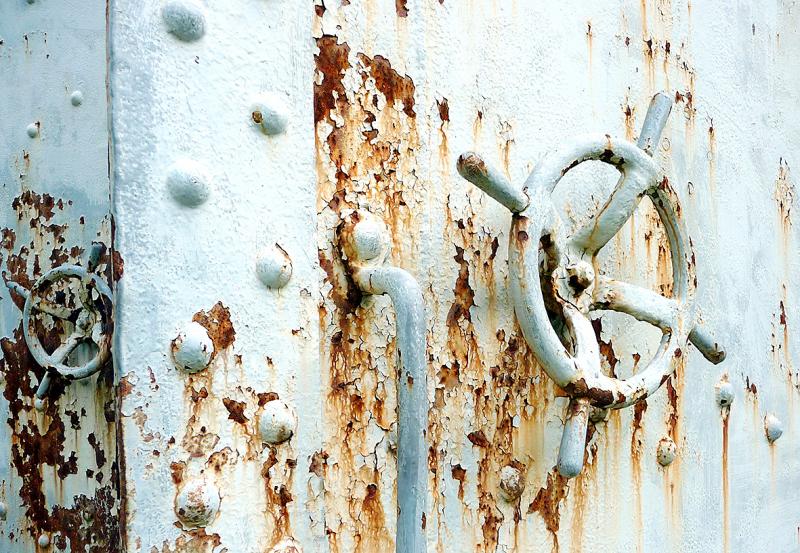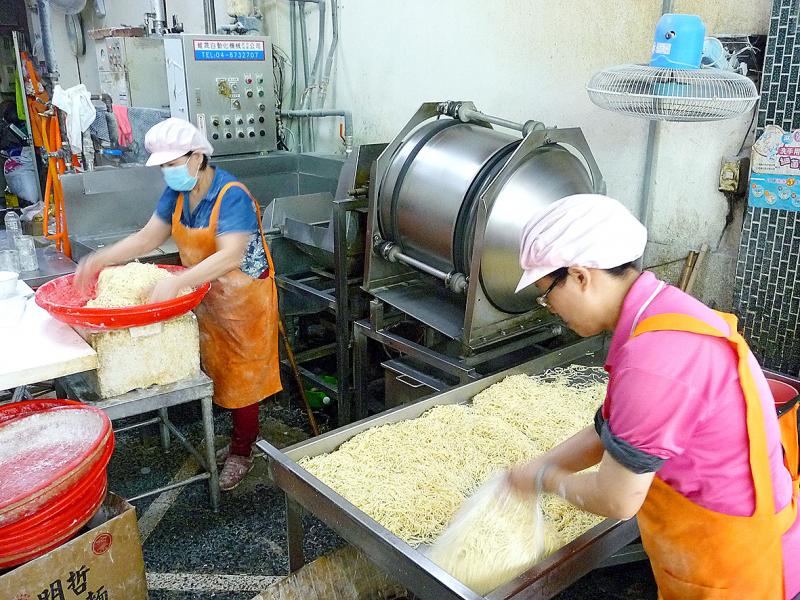I’ve reached the end of this particular road. After 49 months and 171 articles, Highways & Byways is retiring to make room for other voices.
I’ll still be contributing the occasional travel piece to this newspaper, and continuing my twice-a-month environment column. From now on, however, I can be a selfish sightseer.
When I go someplace by bus, no longer will I keep an eye out for parking spots. If I ride my motorcycle, I needn’t spare a thought for those who want to get to the same place using public transportation. And on scorchingly hot days, if I don’t feel like walking any further, I won’t — even if I suspect there’s something around the corner that Taipei Times readers may find interesting.

Photo: Steven Crook
Don’t get me wrong: I’ve relished each and every excursion. It’s been worth the occasional blister, sunburn and mosquito bite to see so much of Taiwan. A few destinations have disappointed, but they’re far outnumbered by places that exceeded expectations. And I can’t think of a single trip I regret making.
UNCOVERING THE OBSCURE
People who ask me how I find some of the more obscure attractions I’ve covered in Highways & Byways often express surprise when I tell them that maps are more useful than social media. For instance, it was on an online map that I first noticed the former Imperial Japanese Navy Wireless Communications Station (原日本海軍鳳山無線電信所) in Kaohsiung (“Radio waves,” Oct. 26, 2018).

Photo: Steven Crook
Gazing at maps isn’t my only old-school habit. On buses and trains, while other passengers are mesmerized by their smartphones, I look out of the window. Itching to access a wild valley I could see from the Kaohsiung-to-Taitung express, on one journey to the east I studied the unpaved road that runs parallel to the South Link Line (南迴鐵路) with the intensity of a spy.
Several weeks later, I returned on my bike and spent a memorable day exploring the Fangshan Creek (枋山溪) watershed. My writeup of that expedition (“A road built for trainspotting”) appeared on Nov. 30, 2018.
Last year, a friend told me that the elevated steel roadway mentioned in my article has been dismantled. Cyclists now have to ride on gravel and cross multiple creeks — which just goes to show that anything I write should be regarded as a snapshot. Thanks to earthquakes and typhoons, few of Taiwan’s landscapes are permanent, even where human impact is minimal.

Photo: Steven Crook
Unlike the highly popular South Link Line, Taiwan’s early enthusiasm for nuclear energy aroused determined opposition. Perhaps it isn’t surprising that the scientists who operate the country’s only research reactor were eager to show me around and explain how nuclear technology can benefit humanity (“The pool of blue light,” Jan. 17, 2020).
AVOIDING THE USUAL ANGLES
Taiwan travel writing is dominated by food, mountains and religious culture. So finding a good topic, like the research reactor, that’s unconnected to any of those themes, gives me a special sense of satisfaction. This, along with my love of industrial heritage, made visiting and writing up the oil-field relics of Chukuangkeng (出礦坑) (“Petroleum and popsicles in back-country Miaoli,” May 28, 2021) one of last year’s highlights. Earlier I alluded to destinations that turned out to be far more engrossing that I’d dared hope. Chukuangkeng falls into that category, for sure.

Photo: Steven Crook
Stumbling across a place of interest that doesn’t appear on maps — and which all but a few Chinese-language bloggers ignore or remain ignorant of — is another delight, especially if it may be connected to a murky episode in Taiwan’s history. Mount Ganlan (橄欖山) isn’t much of a hill, but some say that soldiers trained here because former president Chiang Kai-shek (蔣介石) planned to send an expeditionary force to Vietnam. This army, the dictator hoped, would not only assist the South Vietnamese and their American allies, but also expand the anti-communist war into China (“A Cold War relic in rural Tainan” Jan. 4, 2019).
If Chiang’s influence intrigues you, look at a piece I wrote about Kaohsiung’s Cijin (旗津), where he’s been elevated to a minor deity (“The waves of history that washed over Cijin,” Oct. 30, 2020).
When planning a research trip, it’s impossible to predict just how much text I’ll get out of a half day or a whole day on-site.

Photo: Steven Crook
Eight hours on Cijin resulted in two lengthy articles. One featured the shrines where the dead dictator is honored. The other focused on those at the opposite end of the power spectrum: female factory workers who drowned, and whose posthumous status reflects ancient thinking about marriage and lineage (“The 25 women of Cijin,” Sep. 25, 2020).
By contrast, I devoted two full days to the Canal Greenway (水圳綠道), Taiwan’s longest bike-only trail, for just one article (“Burned up and washed out,” Jun. 3, 2022). And I didn’t even get the satisfaction of completing an end-to-end ride.
NOT LEISURE
.jpg)
Photo: Steven Crook
Some people who’ve never tried their hand at travel writing don’t realize that two days of travel research isn’t the same as a two-day leisure trip. If I go somewhere with the intention of writing about it, there’s a constant and nagging concern that I might miss something of significance, and feel foolish when a reader asks: “But what about the…?”
I have to be flexible when I’m on the road. The weather doesn’t always cooperate. Sometimes the opening hours listed on a Web site aren’t accurate. But lingering at a place just because I’m enjoying myself is seldom an option. After gathering hard facts and personal impressions, and taking some photos, I have to move on. As you might imagine, I’m looking forward to again being able to really smell the flowers. Or the dumplings. Or the sea breezes. Or the incense.
There’s only one way to end this article, and that’s with a shout out to all the Taiwanese who’ve helped me, both during my travels and afterward by answering questions on subjects as diverse as architecture and waterbirds. I hardly ever tell the individuals I meet why I’ve gone to a particular place, so you can be sure this hospitality isn’t motivated by a desire to present Taiwan in the best possible light. And I know I’m not the first outsider to say this: People, as much as natural scenery and culture, are this country’s greatest asset.
Steven Crook has been writing about travel, culture and business in Taiwan since 1996. He is the author of Taiwan: The Bradt Travel Guide and co-author of A Culinary History of Taipei: Beyond Pork and Ponlai.

That US assistance was a model for Taiwan’s spectacular development success was early recognized by policymakers and analysts. In a report to the US Congress for the fiscal year 1962, former President John F. Kennedy noted Taiwan’s “rapid economic growth,” was “producing a substantial net gain in living.” Kennedy had a stake in Taiwan’s achievements and the US’ official development assistance (ODA) in general: In September 1961, his entreaty to make the 1960s a “decade of development,” and an accompanying proposal for dedicated legislation to this end, had been formalized by congressional passage of the Foreign Assistance Act. Two

Despite the intense sunshine, we were hardly breaking a sweat as we cruised along the flat, dedicated bike lane, well protected from the heat by a canopy of trees. The electric assist on the bikes likely made a difference, too. Far removed from the bustle and noise of the Taichung traffic, we admired the serene rural scenery, making our way over rivers, alongside rice paddies and through pear orchards. Our route for the day covered two bike paths that connect in Fengyuan District (豐原) and are best done together. The Hou-Feng Bike Path (后豐鐵馬道) runs southward from Houli District (后里) while the

March 31 to April 6 On May 13, 1950, National Taiwan University Hospital otolaryngologist Su You-peng (蘇友鵬) was summoned to the director’s office. He thought someone had complained about him practicing the violin at night, but when he entered the room, he knew something was terribly wrong. He saw several burly men who appeared to be government secret agents, and three other resident doctors: internist Hsu Chiang (許強), dermatologist Hu Pao-chen (胡寶珍) and ophthalmologist Hu Hsin-lin (胡鑫麟). They were handcuffed, herded onto two jeeps and taken to the Secrecy Bureau (保密局) for questioning. Su was still in his doctor’s robes at

Mirror mirror on the wall, what’s the fairest Disney live-action remake of them all? Wait, mirror. Hold on a second. Maybe choosing from the likes of Alice in Wonderland (2010), Mulan (2020) and The Lion King (2019) isn’t such a good idea. Mirror, on second thought, what’s on Netflix? Even the most devoted fans would have to acknowledge that these have not been the most illustrious illustrations of Disney magic. At their best (Pete’s Dragon? Cinderella?) they breathe life into old classics that could use a little updating. At their worst, well, blue Will Smith. Given the rapacious rate of remakes in modern